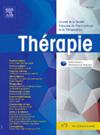How can the environmental sustainability of healthcare products be taken into account throughout their life cycle?
Abstract
Healthcare product procurement accounts for around 50% of the French healthcare system's greenhouse gas emissions. This lesson learned from the publication of the Shift Project's work in November 2021 has been a catalyst within the healthcare system, accelerating the consideration and implementation of actions aimed at reducing the environmental impact of the healthcare system, before, during and after care. In addition to their carbon footprint, healthcare products have a wide range of environmental impacts, including on water, air and soil, throughout their entire life cycle. We have chosen to divide this life cycle into four main stages: from research and development to production, distribution and market access, use and finally end-of-life management. Analysis of the regulatory framework at each stage and of existing initiatives described in the literature or by those in the field have structured and fuelled our thinking. We found that existing regulations focus exclusively on the health risk, with little or no consideration of the environmental risk, which is in itself a health risk. Furthermore, the implementation of certain structuring actions during the first 3 stages of the life cycle would make it possible to simplify or even eliminate the major problem of waste management associated with the end-of-life of healthcare products. With this in mind, we have produced 9 recommendations to ensure that the environmental impact of healthcare products is better taken into account throughout their life cycle.

 求助内容:
求助内容: 应助结果提醒方式:
应助结果提醒方式:


